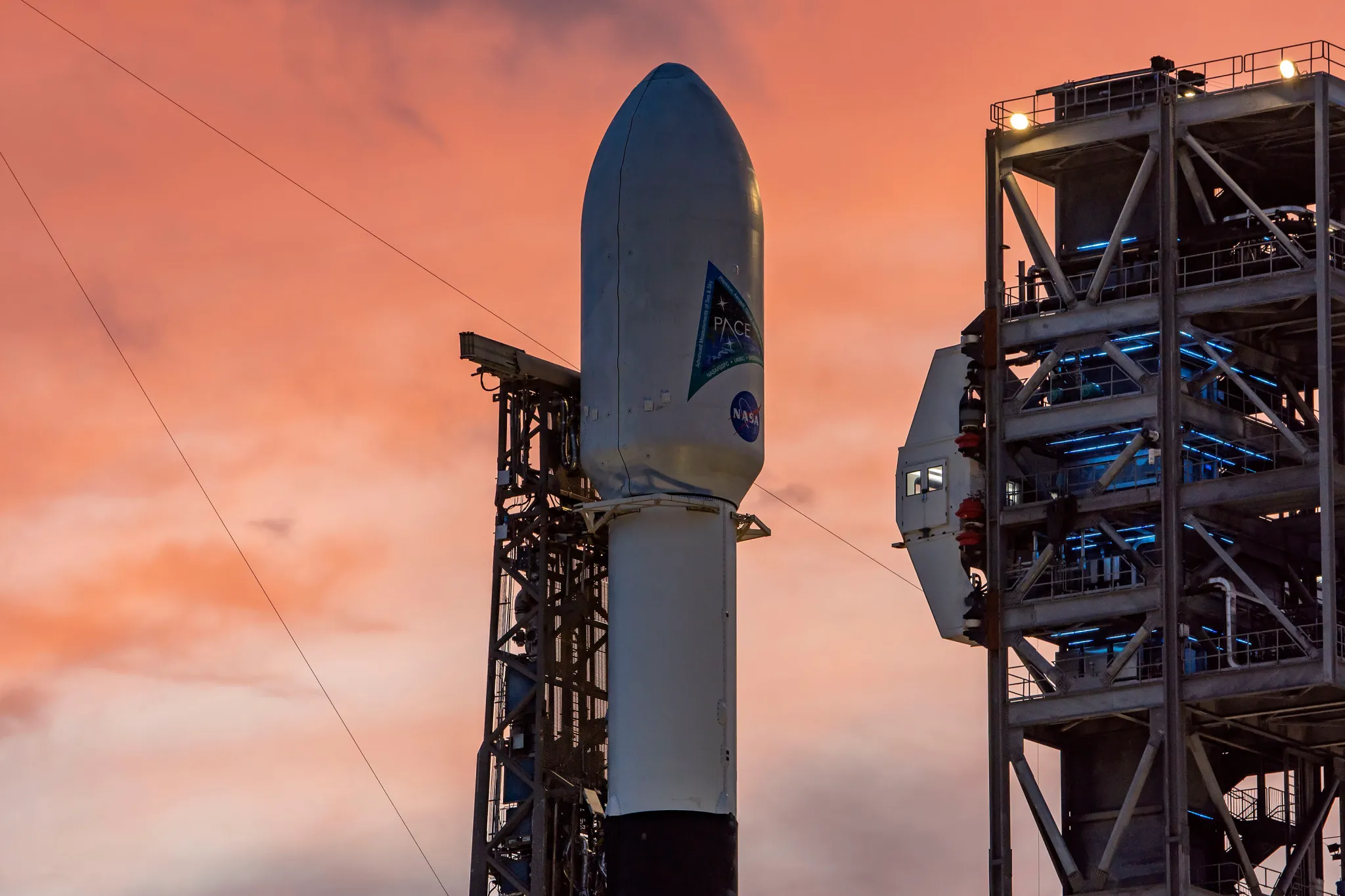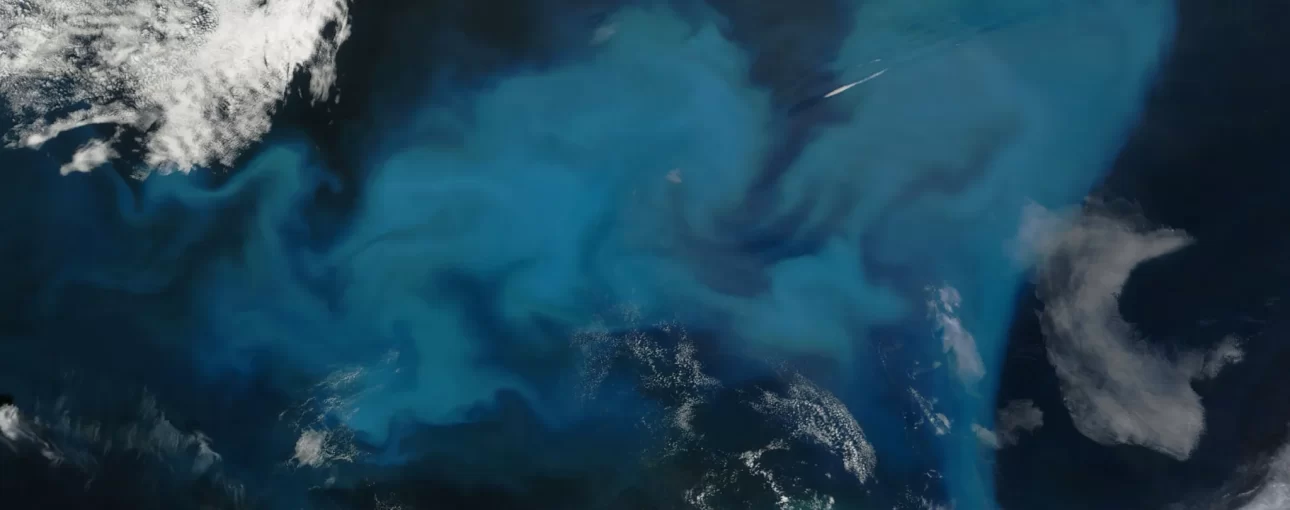Helping Coastal Communities Keep Fisheries Safe
Dr. Marina Marrari Featured on Nasa’s Website as an Early Adopter of PACE technology to monitor ocean health
Pictured – The paisley pattern of peacock blue owes its color to phytoplankton. Credit: NASA/Goddard/Jeff Schmaltz/MODIS Land Rapid Response Team
In coastal communities, knowing the quality of the water is essential for ecosystem health, safe and sustainable seafood, and recreation – not to mention human livelihoods that depend on fisheries.
The image is a satellite view, peering down on the ocean. The background of the image is the dark blue color of the ocean, but centered in the image is a swirling shape of light blue, milky substance – phytoplankton making up a bloom. In the foreground of the image are bright white clouds, seen in the top left corner and along the bottom of the image.
Phytoplankton are microscopic organisms that live in watery environments. When conditions are right, phytoplankton undergo explosive population growth, creating blooms visible from space. Such a bloom occurred in the North Atlantic Ocean, off the coast of Newfoundland in early August 2010. The Moderate Resolution Imaging Spectroradiometer (MODIS) on NASA’s Terra satellite captured this natural-color image on Aug. 9, 2010.

Marina Marrari, executive director of the Costa Rican Fishing Federation in San José is one of PACE’s early adopters. Marrari and her colleagues developed a mobile app that will pull in data from PACE’s Ocean Color Instrument to help inform the public about harmful algal blooms.
Known as pezCA, the app distributes near real-time data about ocean temperature, chlorophyll concentration, and currents as measured by other NASA satellites. Once PACE data is available, the app will be updated to include a product on specific types of harmful algal blooms that can have toxic effects on people and animals.
The APP is currently available for FREE Download for IPHONE and Android (English and Spanish) here
Read the full article on NASA’s Website here:
Early Adopters of NASA’s PACE Data to Study Air Quality, Ocean Health





















